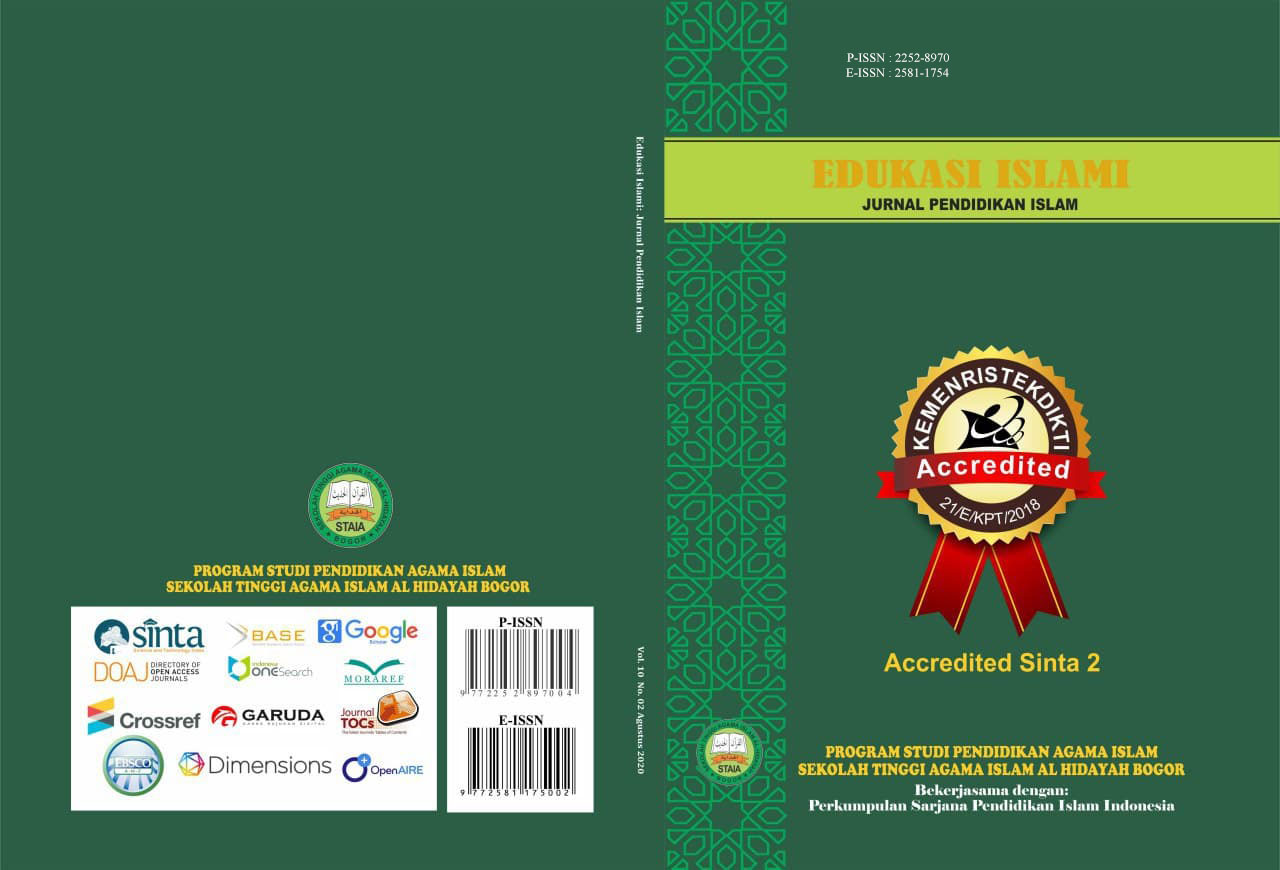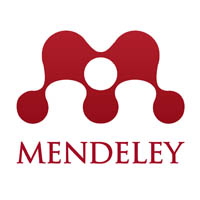DEVELOPMENT OF BLENDED LEARNING MODELS TO IMPROVE THE LEARNING EFFECTIVENESS IN HIGHER EDUCATION
DOI:
https://doi.org/10.30868/ei.v11i01.3224Keywords:
Pengembangan Model, Blended Learning, Efektivitas Pembelajaran, Perguruan TinggiAbstract
This study aims to: 1) Know the description of needs analysis in blended learning at the Islamic University of Makassar;2) Produce products in the form of model books and blended learning tools that are practical and effective to increase the effectiveness of learning at the Islamic University of Makassar. The subjects of this study were students and lecturers of the Elementary School Teacher Education Study Program (PGSD) of the Faculty of Teacher Training and Education, Islamic University of Makassar. The research and development procedure used is a 4-D (Four-D) model: Define, Design, Develop and Disseminate. The data collection techniques are observation, interviews, tests, questionnaires and documentation. The research instrument uses an instrument to observe the implementation of learning, a test instrument for assessing student learning outcomes, and a validation sheet for learning tools. The data analysis technique is carried out using; 1) analysis of the level of practicality and effectiveness; 2) analysis of student and lecturer response data. This study's results show the need to develop a blended learning model to increase the effectiveness of high-level learning. The practicality and effectiveness test results state that this model has proven to be very practical and effectively used based on the results of observations of learning implementation and questionnaires of lecturer and student responses.
References
Achmadi.T.A. (2015). Pengaruh Penerapan Blended Learning Terhadap Prestasi Belajar Peserta didik Kelas XI Teknik Permesinan SMK Muhammadiyah 3 Yogyakarta. Yogyakarta: Fakultas Teknik Universitas Negeri Yogyakarta
Alam, Andi Syamsu (2019) Hubungan Keaktifan Mengikuti Kegiatan Ekstrakurikuler dan Dukungan Orang Tua dengan Minat Belajar Murid SDN 131 Tacinnong Kecamatan Amali Kabupaten Bone. Jurnal
Badriyah. 2015). Efektifitas Proses Pembelajaran Dengan Pemanfaatan Media Pembelajaran. Jurnal Lentera Komunikasi. (Online) Vol.1 No. 1 (https://plj.ac.id/ojs/index.php/jrksi/article/view/127, Diakses 18 september 2020)
Coe, M., Hanita, M., Nishioka, V., & Smiley, R. (2011). An Investigation of the Impact of the 6+1 Trait Writing Model on Grade 5 Student Writing Achievement. Washington DC: Department of Education United State of America
Dendup, T. & Onthanee, A. (2020). Effectiveness of Cooperative Learning on English Communicative Ability of 4th Grade Students in Bhutan. International Journal of Instruction, 13(1), 255-266.
Denzin, N. K., & Lincoln, Y. S. (2009). Handbook of Qualitative Research. Yogyakarta: Pustaka Pelajar.
Dimyati & Mudjiono. (2006). Belajar dan Pembelajaran. Jakarta: PT Rineke Cipta
Driscoll, M & Carliner. (2002). Blended Learning: Let's get beyond the hype. elearning.(http://www.ltimagazâ„¢ 164 vitimagazine/article/articleDetail.jsp? id=11755, diakses pada 4 Mei 2021)
Dwiyogo D. Wasis. (2019). Pembelajaran Berbasis Blended Learning . Rajawali Pers
Gearrison, D.R. dan Vaughan, N.D. (2008). Blended Leaming in Education. San Francisco: Jossey-Bass.
Gustafson and Branch. (2002). Survey Of Instructional Design Models, Syracuse University. ERIC Clearinghouse on IT, New York.
Harmon, A. D & Jones, T. S. (2005). Elementary Education: A Reference Handbook. California: ABC-CLIO, inc.
Hartono Dan Rustaman Y. Nuryani. (2008) Pembelajaran Blended Learning Pada Mata Kuliah Praktikum IPA: Studi Ujicoba Lapangan Pembelajaran Online Pada S1 PGSD: Forum Kependidikan, Volume 28, Nomor 1, September 17-25
Hasbi, H. (2016). Pengembangan Model Pembelajaran Berbasis Masalah Menggunakan Lingkungan Sekitar untuk Meningkatkan Ketuntasan Belajar di Sekolah Dasar. Makassar: Pascasarjana Universitas Negeri Makassar
Haughey, M. & Anderson, T. (1998). Networked Learning: The Pedagogy of the Internet. Montreal: Cheneliere/McGraw-Hill.
Hergenhahn, B.R., Olson, M.H. (2011). Theories of Learning (terjemahan Tri Wibowo), Jakarta: Kencana Prenada Media.
Herliana F. (2015) Pengaruh Model Pembelajaran Berbesis Blended LearningDan Motivasi Belajar Terhadap Hasil Belajar Fisika Peserta didik SMA. Prosiding Seminar Nasional Fisika (E-Journal) Volume V.
Idris Husni. (2011) Pembelajaran Model Blended Learning Jurnal Iqra’ Vol.5. No.1, Januari – Juni 61-73
Jalaluddin , Idi Abdullah. (2011). Filsafat Pendidikan, Jakarta: Raja Grafindo Persada.
Joyce, B., Weil, M., & Calhoun, E. (2011). Models of Teaching (Model-Model Pembelajaran). Yogyakarta: Pustaka Pelajar.
Kemendikbud. (2013). Permendikbud No. 109 tentang Penyelenggaraan Pendidikan Jarak Jauh pada Pendidikan Tinggi. Jakarta: Kementrian Pendidikan dan Kebudayaan
Kemenristekdikti. (2012). Undang-Undang Republik Indonesia Nomor 12 Tahun 2012 Tentang Pendidikan Tinggi. Jakarta: Pemerintah Republik Indonesia
Kurniawati J. (2014). Pengembangan Model Pembelajaran Blended Learning pada Mata Pelajaran Keterampilan Komputer dan Pengelolaan Informasi (KKPI)Kelas XI Di SMK Negeri 2 Purwodadi. Kurikulum dan Teknologi Pendidikan Fakultas Imu Pendidikan Universitas Negen Semarang
Kusni, M. (2010). Implementasi Sistem Pembelajaran Blended learning Pada Kutiah AE3121 Getaran Mekanik di Program Stud Aeronotika dan Astronotika. Makalah Seminar Nasional Tahunan Teknik Mesin (SNTTM) ke-9 Palembang.
Lavanya, B., Shylaja, B. S., & Santosh, M. S. (2017). Industry 4.0- The Fourth Industrial Revolution. International Journal of Science, Engineering and Technology Research, 6(6), 1004–1006.
Marcal, J. (2007). Corporate Blended Learning In Portugal: Current Status And Future Directions, ISCTE-IUL — Lisbon University Institute.
Mulyasa. (2012). Mamanajemen Berbasis Sekolah Konsep, Strategi, Implementasi. Bandung: Rosda.
Nelson, N (2016). Kreatifitas dan Motivasi Dalam Pembelajaran Seni Lukis Nusantara: Jurnal Ilmu Pengetahuan Sosial, 1 (1) 42-58. ISSN 2541-657X
Putra, N. 2011. Research & Development (Penelitian dan Pengembangan: Suatu Pengantar). Jakarta: Rajagrafindo Persada.
Puspita, O. W., Andayani, Waluyo, H. J., & Rohmadi, M. (2017). A Needs Analysis for Poetry Appreciation Textbooks in Universitites: An Exploratory Study. American Journal of Educational Research, 5(4), 357–361.
Rahmi, Ulfia. (2017) Blogfolios Dalam Blended Learning Sebagai Sarana Dalam Pengembangan Kemampuan Pemrosesan Informasi Mahasiswa Di Era Digital Pada Program Studi Teknologi Pendidikan FIP UNP : Fakultas Ilmu Pendidikan Universitas Negeri Padang
Ramsay. (2001). Teaching and Learning With Information and Communition Tecnology. Succes Through a Whole School.
Risky Setiawan dkk (2019). Efektivitas Blended Learning Dalam Inovasi Pendidikan Era Industri 4.0 Pada Mata Kuliah Teori Tes Klasik. Jurnal Inovasi Teknologi Pendidikan Volume 6, No. 2, Oktober 148-157.
Rojko, A. (2017). Industry 4.0 Concept: Background & Overview. International Journal ofInteractive Mobile, 11(5), 77—90
Rosenberg & Marc. (2001). E-Learning: Strategies for Delivering Knowledge in the Digital Age, The McGraw Hill Companies, Inc, Columbus, OH 43272, USA
Rustaman. N. (2011). Materi dan Pembelajaran IPA SD. Jakarta: Universitas Terbuka.
Said, H. (2014). Pengembangan Model Pembelajaran Virtual untuk Meningkatkan Efektivitas Pembelajaran pada Madrasah Negeri di Kota Parepare. Lentera Pendidikan, 17(1), 18–33.
Salim, N. A., Walker, Z. M., & Rosenblatt, K. (2016). Teachers' Perceptions on the Effectiveness of a Process Genre Approach on the Writing Skills of Students with Dyslexia. Asia Pacific Journal of Developmental Differences, 3(1), 35–61.
Seel, B.B & Richey, R.C. (2011). Instructional Technology; The Definitions and Domain of the Fields: Terjemahan Dewi, SP, Raharjo, Yusuf hadi Miarsa. Jakarta: IPTPI, LPTK.
Sharon S. (2009). Handbook of Cooperative Learning: Inovasi Pengajaran dan Pembelajaran Untuk Memacu Keberhasilan Siswa di Kelas; Terjemahan Sigit Prawoto; Yogyakarta: Imperium.
Shibley, 1; Amaral K.A, Shank, J.D, dan Shibley, L.R (2011). Designing a Blended Course: Using ADDIE to Guide instructional Design. Journal of College Science Teaching.40 (6): 80-85
Siemens, G. (2004). Connectivism: A Learning Theory For The Digital Age, International Journal Of Instructional Technology And Distance Learning, Vol. 2, No. 1, Pp. 3-10.
Sjukur, S. B. (2012). Pengaruh Blended Learning Terhadap Motivasi Belajar Dan Hasil Belajar Siswa Tingkat SMK. Jumal Pendidikan Vokasi, Vol 2, Nomor 3. 368-378.
Sudibyo, E., Jatmiko, B., & Widodo, W. (2016). The Effectiveness Of Cbl Model To Improve Analytical Thingking Skills The Students Of Sport Science. International Education Studeis, 9 (4), 195-203 DOI : 10.5539/Ies.V9n4p 195.
Sukardjo M. dan Komarudin Ukim. (2012). Landasan Pendidikan Konsep dan Aplikasinya, Jakarta : PT Raja Grafindo Persada
Thai, H.V. & Anh, M.A. (2017). The 4.0 Industrial Revolution Affecting Higher Education Organizations' Operation in Vietnam. International Journal Management Technology, 4(2), 1-12
Thiagarajan, S., Semmel, D. S., & Semmel, M. I. (1974). Instructional Development for Training Teachers of Exceptional Children. Blomington Indiana: Indiana University.
Tresna, Yayu. (2018), Menelaah Teori Vygotsky Dan Interdepedensi Sosial Sebagai Landasan Teori Dalam Pelaksanaan Pembelajaran Kooperatif Di Sekolah Dasr Jurnal Kajian Penelitan Pendidikan dan Pembelajaran Vol.3, No.1 231-239
Trianto. (2011). Model-model Pembelajaran Inovatif Berorientasi Konstruktivistik: Konsep, Landasan Teoretis Praktis, dan Implementasinya. Jakarta: Prestasi Pustaka.
Wibowo, Nugroho. 2016. Upaya Peningkatan Keaktifan Siswa melalui Pembelajaran Berdasarkan Gaya Belajar di SMK Negeri 1 Saptosari., 1(2), 128-139.
Yaman, M. & Graf, D. (2010). Evaluation Of An International Blended Learning Cooperation. TOJET: The Turkish Online Journal of Educational Technology -April 2010, volume 9 Issue 2 Evaluation, 9(2), 87-96.
Yapici, I. U. & Akbayin, H. (2012). The Efect Of Blended Learning Model On High School Students' Biology Achievement And On Their Attitudes Towards The Internet. TOJET: The Turkish Online Journal of Educational Technology 11(2), 228-237.
Downloads
Additional Files
Published
Issue
Section
Citation Check
License
Authors who publish with this journal agree to the following terms:
- Authors retain copyright and grant the journal right of first publication with the work simultaneously licensed under a Creative Commons Attribution License that allows others to share the work with an acknowledgment of the work's authorship and initial publication in this journal.
- Authors are able to enter into separate, additional contractual arrangements for the non-exclusive distribution of the journal's published version of the work (e.g., post it to an institutional repository or publish it in a book), with an acknowledgment of its initial publication in this journal.
- Authors are permitted and encouraged to post their work online (e.g., in institutional repositories or on their website) prior to and during the submission process, as it can lead to productive exchanges, as well as earlier and greater citation of published work (See The Effect of Open Access).









